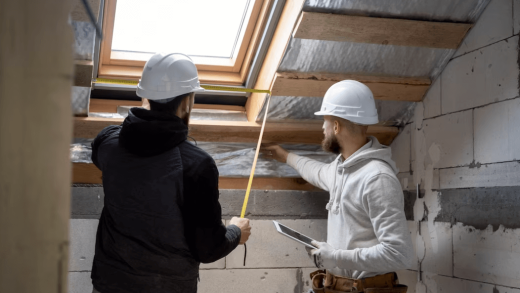Roof Design Software
Are you an architect or a roofing professional looking for ways to streamline your roof design process? Look no further than roof design software! With the help of specialized digital tools, designing and analyzing complex roofing structures has never been easier. In this blog post, we’ll explore what roof design software is, why it’s needed in the industry, its benefits, different types available on the market today, and how to choose the right one for your project. Let’s dive into the world of architecture and digital design together!
What is Roof Design Software?
Roof design software is a specialized tool that helps architects and designers create accurate and efficient roof designs.
It combines the principles of architecture, engineering, and construction to deliver an all-in-one solution for designing roofs. Digital design has become more popular in recent years due to its ability to produce intricate roof plans.
With digital tools like roof design software, it is now possible to plan out complex roofing structures quickly and easily. These software programs provide features such as 3D modeling, material estimation, structural analysis, photorealistic renderings, and many more.
Architectural software can be used by professionals ranging from small business owners up to large corporations with multiple locations around the world. The use of this kind of technology not only saves time but also reduces costs while improving accuracy in planning projects.
In essence, Roof Design Software is a vital tool for architects who want to stay ahead in today’s fast-paced industry where every detail matters!
The Need for Specialized Design Software in Roofing
Designing a roof may seem like a simple task, but it requires careful planning and precise calculations. Roof design software is necessary as it provides specialized tools to create detailed plans that architects and builders can use to construct the roof.
Without this type of software, roofing professionals would have to rely on rough sketches or traditional methods such as manual measurements and 2D drawings. These methods are not only time-consuming but also prone to errors, which could lead to costly mistakes during construction.
Specialized design software for roofing simplifies the process by providing accurate measurements, detailed 3D models, material estimations, and structural analysis in real-time. With these advanced features at their fingertips, designers can make informed decisions quickly while reducing errors.
Roof design software also allows for better collaboration among team members working on the project remotely. The cloud-based system enables users to access files from any location with an internet connection, making communication easier than ever before.
Specialized design software is essential in modern-day architecture as it helps streamline workflow processes while improving accuracy and efficiency.
The Benefits of Using Roof Design Software
Roof design software has revolutionized the way roofing professionals work. With its advanced features and capabilities, it offers numerous benefits that can help save time, money, and effort.
One of the biggest advantages of using roof design software is accuracy. It provides precise measurements and calculations for roofing materials needed, reducing errors in estimation and material ordering. This helps to minimize waste while increasing efficiency on-site.
Another benefit is speed. Roof design software enables quick generation of designs, which allows architects, contractors, and builders alike to meet tight deadlines with ease. The ability to make changes quickly also saves time during revisions or alterations.
With 3D modeling capabilities in many programs, designers can create photorealistic renderings of their designs before construction even begins. This provides clients with a visual representation of what their finished project will look like, helping them make informed decisions about the final product.
Moreover, roof design software makes it easier for team collaboration between architects, engineers, and contractors by allowing them to share data seamlessly throughout all stages of a project from conceptualization to completion.
There are several significant benefits associated with using roof design software, such as increased precision in measurement calculation, reduction in error rates leading to cost savings and sustainability, faster turnaround times due to quicker revision cycles, and overall improved quality assurance through better integration across different stakeholders involved.
Types of Roof Design Software
When it comes to roof design software, there are several types available in the market today. Some of these include CAD (Computer-Aided Design) tools, BIM (Building Information Modeling) tools, and dedicated roofing software.
CAD (Computer-Aided Design) Tools
CAD tools are widely used by architects and designers for creating 2D and 3D models of buildings. These tools allow users to create accurate and precise designs that can be easily modified as needed. They also enable designers to visualize their designs in real-time.
BIM (Building Information Modeling) Tools
BIM tools offer a more collaborative approach to building design by allowing different stakeholders to work together on a single platform. This type of software is ideal for large-scale construction projects where there are multiple teams involved.
Dedicated Roofing Software
Dedicated roofing software is designed specifically for roofers and contractors who need specialized features like material estimation, structural analysis, and photorealistic renderings. These types of software typically have built-in libraries of materials and components that make it easier for users to create accurate estimates.
The type of roof design software you choose will depend largely on your specific needs as well as the scale and complexity of your project. It’s important to do your research before making a decision so that you can find the right tool for your needs.
Key Features of Roof Design Software
Roof design software comes with a range of features to help architects and designers create accurate and efficient roofing designs. Some of the key features include:
3D Modeling
3D modeling plays a crucial role in roof design software as it allows architects and designers to visualize their designs in a three-dimensional space. This feature helps identify any flaws or issues before construction begins.
Material Estimation
Material estimation provides an estimate of the amount of materials required for the project. This includes everything from shingles and tiles to insulation and ventilation systems. With this feature, users can accurately estimate costs while reducing waste.
Structural Analysis
Structural analysis enables engineers to analyze and test roof designs for strength and durability. It takes into account factors such as wind loads, snow loads, seismic activity, fire resistance, among others.
Photorealistic Renderings
Photorealistic renderings enable users to generate high-quality images of their designs from different angles with realistic lighting conditions by applying textures on surfaces based on actual materials used in real-life scenarios.
These features help streamline the design process while ensuring accuracy and cost-effectiveness throughout every stage of the project lifecycle.
Comparing Popular Roof Design Software Options
When it comes to choosing the right roof design software, there are several options available in the market. Some popular options include:
- SketchUp: Offers a user-friendly interface for designing roofs with precision and accuracy. Equipped with 3D modeling tools for visualization.
- Revit Architecture: Uses BIM technology for complex designs and structural analysis. Allows for detailed models and accurate measurements.
- RoofSnap: Provides an all-in-one solution with aerial measurement tools, estimating modules, and project management features.
- Chief Architect: Boasts an extensive library of pre-built roof templates and advanced rendering capabilities for photorealistic visualizations.
The choice of roof design software will depend on specific requirements related to budget constraints, complexity level, and user interface experience required for each project.
The Role of Roof Design Software in Different Projects
Roof design software has become an increasingly valuable tool for architects, engineers, and contractors in a variety of different projects. Whether it’s designing a new residential roof or planning the construction of a commercial building, specialized software can help streamline the process and improve overall efficiency.
In residential roofing projects, design software can be particularly helpful in creating accurate material estimates and avoiding costly mistakes. For commercial roofing projects that require more complex designs and structural analysis, roof design software is invaluable for creating detailed plans that take into account factors such as wind resistance and insulation requirements.
Roof design software also allows for better communication and collaboration between team members throughout all stages of a project. By sharing digital plans through cloud-based platforms, everyone involved can stay updated on progress and make informed decisions.
Whether working on small-scale residential roofs or large commercial buildings, using specialized roof design software helps ensure success by providing precise data at every level of construction.
How to Choose the Right Roof Design Software
When choosing the right roof design software, consider factors such as:
- Specific needs: Determine whether you need general architectural software with roofing features or dedicated roofing software.
- Key features: Identify which features are essential for your project, such as 3D modeling, material estimation, structural analysis, or photorealistic renderings.
- Learning curve: Consider the user-friendliness of the software and the availability of tutorials or training materials.
- Budget: Take into account the cost of the software and the potential long-term savings it can provide.
By considering these factors and evaluating different options, you can choose the right roof design software that suits your specific project needs.
Overcoming Challenges with Roof Design Software
While roof design software can greatly simplify the design and visualization process, there may still be challenges that arise. Some common challenges include:
- Learning curve: Taking the time to learn and navigate the software effectively.
- Accurate measurements and material estimations: Ensuring knowledge of roofing materials and load-bearing capacities.
- Collaboration: Establishing good communication practices among team members and ensuring everyone has access to relevant information and files.
- Compatibility: Ensuring compatibility between different architectural software used throughout a project.
Overcoming these challenges involves thorough training on using specific tools within the software, effective communication practices, knowledge of roofing materials and structural requirements, and utilizing compatible architecture programs throughout a project’s lifecycle.
In conclusion, roof design software is a crucial tool for architects, engineers, and contractors in creating accurate and efficient roofing designs. By utilizing advanced features such as 3D modeling, material estimation, structural analysis, and photorealistic renderings, professionals can streamline the design process, improve accuracy, and achieve high-quality results. Choosing the right software, considering specific project needs and overcoming challenges, will ultimately lead to successful roof design projects.




